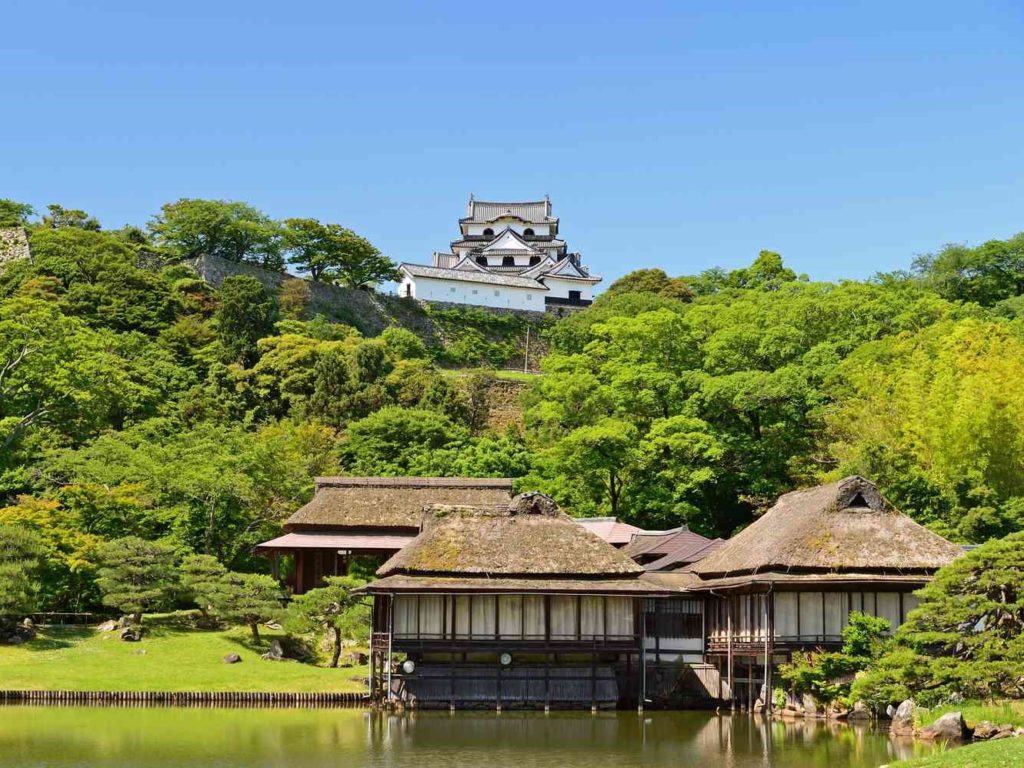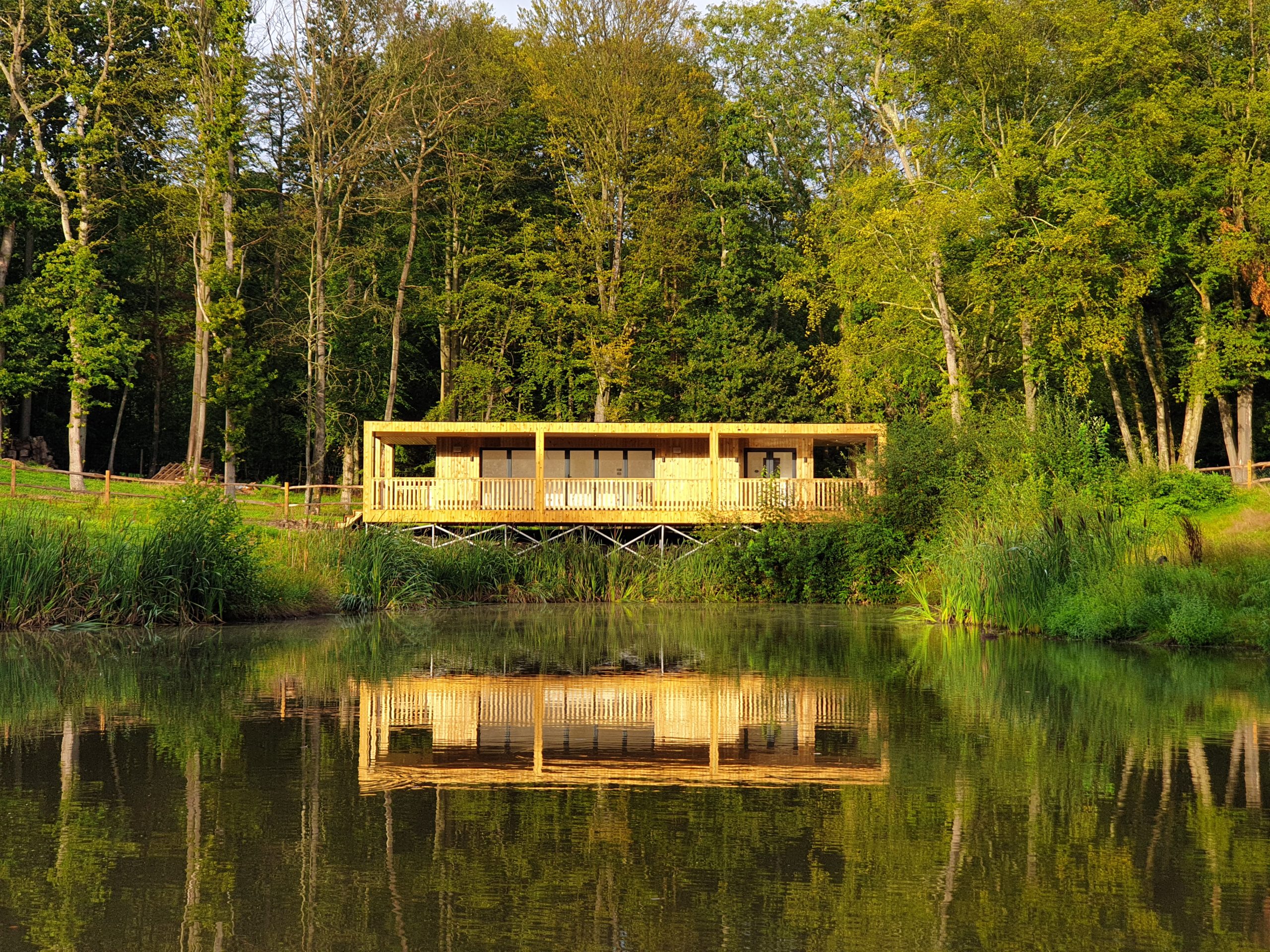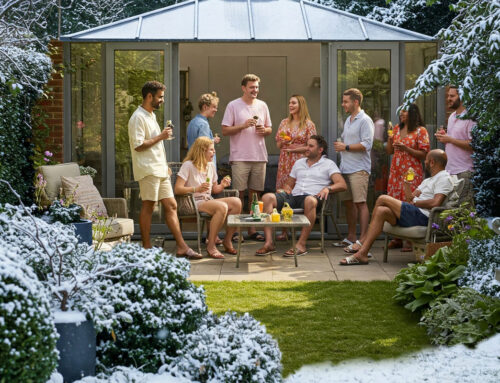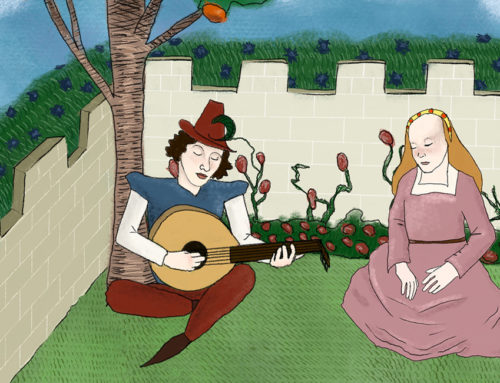Welcome back to part two of the fascinating history of garden buildings. In this article, we will be going into the stunning history of Borrowed Scenery. This concept has made an important mark on Japanese and Chinese landscapes and architecture. This philosophy has gone on influence gardens all over the world, and has even been the inspiration for some of our projects.

Records of Garden Making (Sakuteiki) is one of the oldest published texts on Garden design. Originating in 11th Century Japan during the Heian period, Shakkei (borrowed scenery) was practised way before it was given a name.
Following the style of scenery when making a garden, whether it’s by a river or on a mountain, was the core element of garden making. The placement of stones around the landscape was also deeply important, as it was believed you have to follow the “desire” of the stones, rather than how you place them.
In 17th Century China, “borrowed scenery” appeared in “Yuanye”, a 1631 garden design and care book. In this book, there were 4 different categories of borrowed scenery: Distant borrowing, adjacent borrowing, upward borrowing and downward borrowing.

Source: hayakato getty images
Yuanye is heavily involved in the philosophical concept of garden architecture and design. It explained how the background played a significant part in the garden’s structure. It took into account the forever-changing appearances and seasons of nature, and discussed the importance of making a garden that matches the landscape and site.
Many examples of borrowed scenery have been kept the same for centuries, with the gardens maintained to keep the original design alive and match the beautiful architecture. One of the biggest and most influential in Japanese horticulture is the Shuagkuin Imperial Villas, consisting of a set of gardens with individual “tea houses”, which you can read a guide about here.

The philosophy of borrowed scenery is something that we love to incorporate in our garden room designs. To have a garden building seamlessly blend in with its surroundings not only accentuates our client’s garden, but makes it feel as though their garden room has been there all along.
The garden room photographed above is a lovely example of how borrowed scenery has influenced the way of designing gardens and buildings to complement the landscape. A building isn’t made to outshow the surroundings, but rather go alongside it and let both accompany each other perfectly. You can visit our gallery post on this garden room here to learn more.
Want to learn more about the garden room’s historical background? Stayed tuned for part 3 where we venture on into the Dark Ages and the fascinating symbolism of garden rooms in Medieval times…



